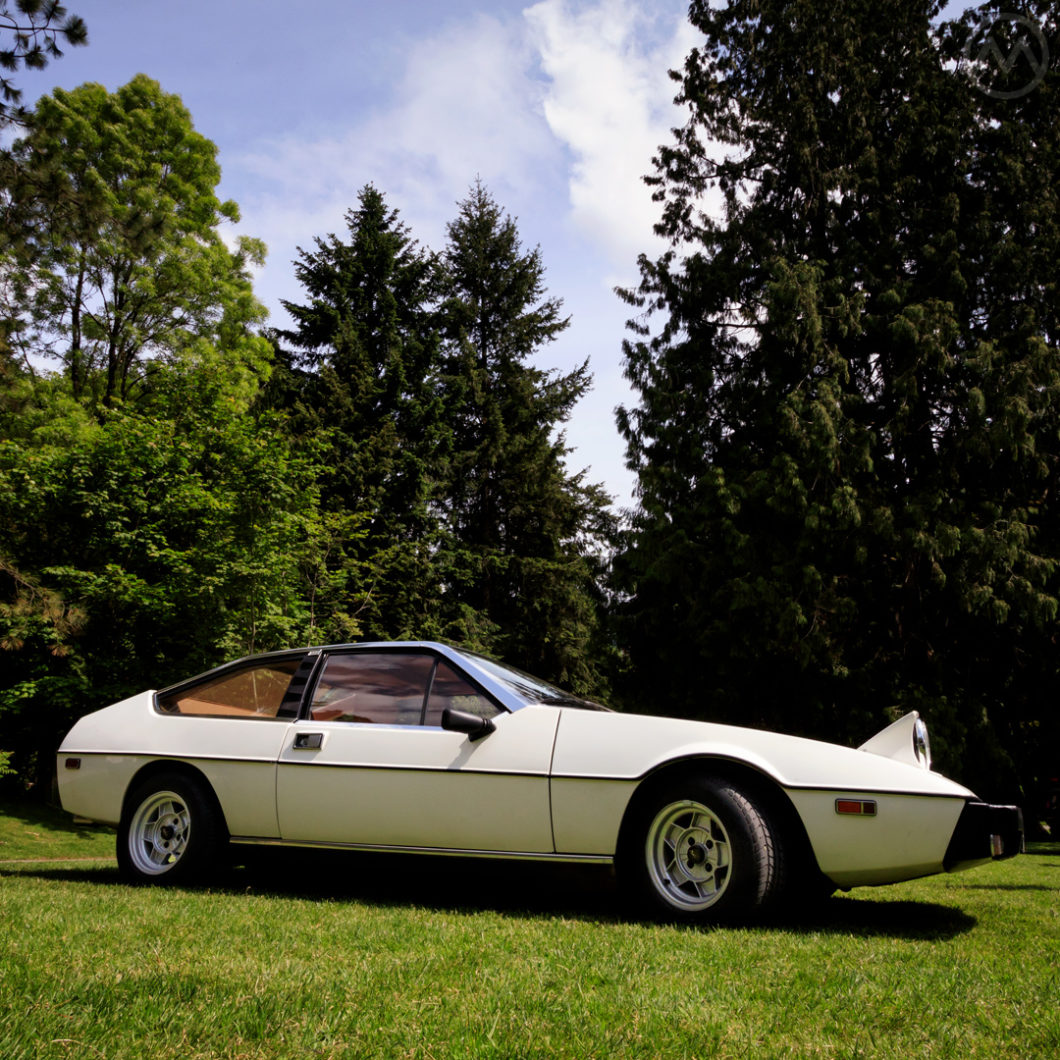In early 1973, the Lotus lineup was familiar – Elan, Elan +2, Europa, Seven. By the time of the Paris Motor Show in October, 1975, it was unrecognizable. For some months, Lotus’ only production car had been the Type 75 Elite – a radical, expensive, wedge-shaped breadvan meant as a luxury GT.
The Elite, reviving the famous name of Lotus’ first proper road car, was the first of a new generation of Lotuses self-consciously moved upmarket by Colin Chapman. It’s high price and opinion-splitting styling meant sales were slow out of the gate, but at Paris backup arrived.
At that show the undoubted superstar was the very first Esprit – but another new Lotus was also on the stand, the Type 76 Lotus Eclat. The Eclat was meant as a cheaper, lighter, more accessible version of the Elite, but it hued very close to its sister car.
Chapman had been keen to shed the traditional image of a “kit car” manufacturer, which is why the Elite and Eclat were created in the first place – starting back in 1972/3 – around the time the arrival of Value Added Tax hurt kit car sales and Lotus farmed off the Seven to Caterham.
The Type 75 Elite
The Oliver Winterbottom-styled Elite was considerably larger than the Elan +2 it replaced – physically and visually – and better appointed too. But being a more luxurious car didn’t mean sacrificing performance. The Elite weighed about 2,500 lbs. – hefty compared to the 2,000-lb. Elan +2 but light for its size. Power came from the 16-valve, 144-hp, Lotus 907 twin-cam four, one of the first production 16V layouts.
The Elite may have been a big car for a Lotus but it still drew praise for its handling and speed if not its price. The Elite could manage 126 mph with four adults shoehorned inside (the ones up front would be comfy, the ones in back…), and while not blazingly fast it was pretty well-paced for an era when safety and emissions regs were biting into performance.
While the Esprit would replace the Europa, another volume seller for Lotus, the Elite wasn’t meant to be the only car in the lineup – the Eclat, it was hoped, would add customers who wanted a more coupe-like experience and more traditional styling at a lower price – typically 10-15% lower.
The Type 76 Eclat
The Eclat shared almost everything with the Elite and the styling below the beltline was almost identical, but the car had a more conventional roofline and it also weighed about 2-300 lbs. less, a big advantage, particularly on heavily optioned 5-speed cars (base Eclats used a Ford 4-speeder). By 1977 it was rated at 160hp.
Both cars used a traditional Lotus backbone frame with a fiberglass body – the seal of which could become water trap, rotting the frame on early cars. That major mistake wouldn’t show up for a few years, but S2 Eclats (1980-82) used galvanized frames.
Various options used codes similar to options on the Elite. 520 was the base car with 13” wheels and the four-speed. “521” added the 5-speed and bigger brakes and GKN wheels, 522 added power steering to the 521 package, 523 got A/C, 524 a Borg-Warner automatic – though few were so equipped.
Like the Elite, the Eclat was praised for its good handling, comfort, and speed – in fact it was often described as a more agile and faster car than the Elite, no doubt due to the weight savings.
In the U.S., the Eclat name was not always used – the car was sometimes called the “2+2 Sprint.” There was also a more performance-focused, slightly stripped down Eclat Sprint in the early days of the car, available in black or white only.
Eclat to Excel
Though cheaper and faster, the Eclat didn’t sell as well as the Elite – about ~1,500 were made to 2,535 Elites. In 1980, both cars got a major update with the Lotus 912 2.2L engine (derived from the same 900-series engine architecture) and updates to the structure and interior. The updates came with new “type” designations – 83 for the Elite and 84 for the Eclat.
By then though, it was clear neither one would ever be a huge seller. Both were retired in favor of a modernized, updated Eclat, the Excel, in 1983.
The Elite and Eclat have long been the most unloved members of the Lotus family – the styling was radically contemporary in 1975 but aged quickly. The Eclat’s more conventional shape meant it aged a little more gently, and the Excel was still a contemporary car when production ended in 1992.
Part of the problem was that quality of the cars was also often suspect (the frame problem being only one obvious sign), particularly on early cars – with vacuum, electrical, and gearbox problems among others. The S2 cars were much improved – but with rusty frames showing up and the cars now five years old, it was too late to make a good impression.
Enthusiasts found ways to improve them over time, but many were felled early. Good ones like this Vancouver, British Columbia-based 1976 Eclat are very rare now.
Winterbottom continued to execute daring wedges, for TVR after Lotus, though he also designed a prototype, wedge-shaped Elan replacement in the early 1980s (that project would become the Peter Stevens-styled Elan M100).

